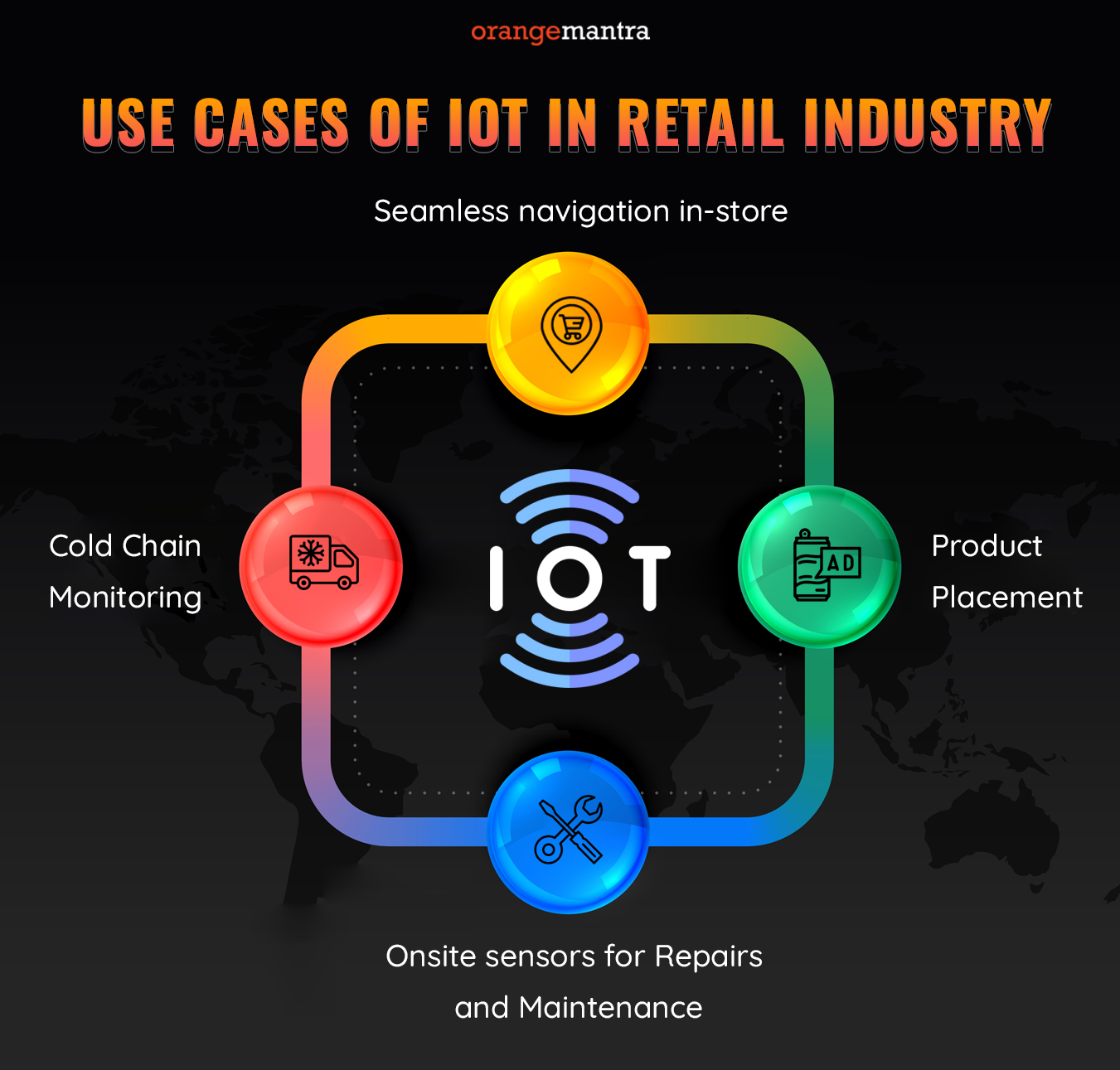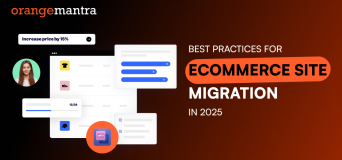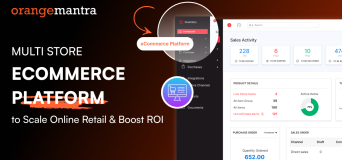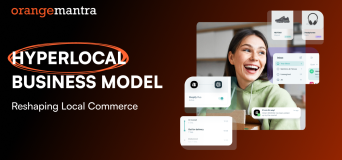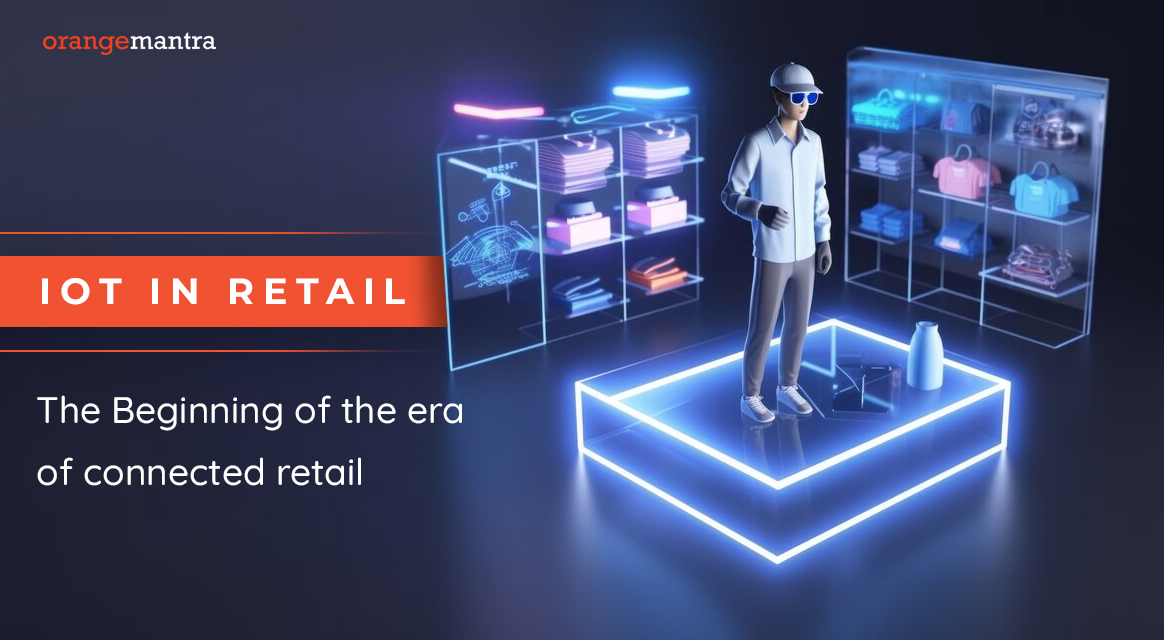
Here’s what you will learn:
The Internet of Things has emerged as a path breaking technology in the last decade and is growing bigger with time. In fact, it is estimated that the number of connected devices will cross the 30 billion mark by 2020. There is hardly an industry that has not tapped its potential today and businesses that fail to do so are at the risk of falling behind. The retail segment has also witnessed the humongous potential of this innovative technology, primarily for transforming the conventional brick-and-mortar stores into convenient customer-centric spaces. Primarily, IoT in retail is all about connectivity and this is how it is changing retail, from conventional to connected.
Retail businesses are embracing IoT applications to strengthen their core and improve their ROI. According to McKinsey, the potential impact of IoT in the retail environments will range between $410 billion and $1.2 trillion per year by 2025, which is a massive figure. Still, when it comes to investing in IoT application development, businesses are often baffled by the decision whether it is worthwhile. The investment can be daunting until you understand the impact it can have on your revenues.
Table of Contents
Statistics to Pay Attention Regarding IoT in Retail
A list of stats is highlighted here that are necessary for you to know. It will give you an idea of how eCommerce software development creates an impact after merging with the latest technologies. Take a look at what IoT in Retail will do after some time.
- According to Statista, the global retail market shows growth from $26.18 trillion in 2022 to $28.34 trillion in 2023. The projection of its reach by the end of 2027 is $37.67 trillion.
- As per the research on the global Smart Retail market, a particular aspect of IoT in Retail industry expand from $34.73 billion in 2022 to $43.73 billion in 2023. The expectation about to it can surge up is $108.37 billion in 2027.
- Based on a survey conducted by Global Data Report Share, one of the major benefits of shaking hands with a retail management software solutions company to incorporate IoT is the improvement in the overall efficiency of your company. The IoT devices can let you manage your inventory management, stock regulation, etc that will escalate your sales and cut down the inventory costs.
What IoT in Retail can do for your business?
Let us explain how Internet of Things can open new opportunities for your retail business and usher the era of connected retail.
Enhanced customer experience
With e-commerce fast becoming a major competitor for brick-and-mortar, nothing matters more than bringing convenience in customer experiences. After all, why would the customer want to go all the way to a retail store if they can buy similar products with just a few clicks. You need to cater them extraordinary shopping experiences that surpass their expectations. Accurate information, good services, quick delivery and simplified checkout are some of the key elements of a positive customer experience.
Investing in a feature-rich IoT application is a smart idea because it empowers your business with features such as digital signage, location-based tracking, and self-checkout, all of which are capable of taking customer experience to the next level. Additionally, these applications can be leveraged to create a connected infrastructure with devices and sensors that allow data circulation to the buyers throughout their shopping journeys.
Provides the basis for personalized targeting
Undoubtedly, your customers are the mainstay of your business and you need to go an extra mile with personalization to fetch and retain them. Rewarding the loyalty bonuses and discount coupons is a great idea to have them returning frequently. IoT can be useful in this context as well. You can set up connected sensors around your store and use them to send loyalty discounts to the customers when are located in close vicinity.
Additionally, IoT coupled with Big Data technology, can be used for tracking the products that the customer has been searching and discovering online. As you know the products they are interested in, you can share a personalized discount when they actually visit your physical store. Since the approach becomes more targeted, you have better chances of capturing the micro-moments and driving instant buying decisions from the customer. So you get the benefits of maximizing your conversion rates and enhancing customer engagement to attract more valuable and loyal long-term customers.
Improves in-store management
The biggest challenge for retail sellers lies in easing the in-store navigation for the shoppers, particularly if the physical store is large in size and the products are massive in numbers. Leveraging the IoT as a part of your digital strategy is a good idea because it offers several connected tools such as beacons, sensors, and cameras to facilitate navigation for the customers. Beyond just improving their experiences, you can also monitor the consumers and understand how their traffic levels behave.
Once you understand their in-store behavior, you can optimize your retail space accordingly. The idea is to make the most popular products easily findable and accessible to the customers by positioning them in aisles that have maximum visibility. Many major players are already using aisle-analytics software with infrared sensors to improve their retail layout. The easier the products are to access, the higher will be the conversion rate for your store.
Enables better inventory traceability
As the supply chains of retail businesses become more complex and longer, there is a need for better management to ensure better functioning. The retailers should be able to track the inventory, right from the time it leaves the manufacturing plant to its delivery in-store. Beyond just tracking the inventory, it is important to find out about the condition of the products, specifically if you are dealing in perishable FMCG items.
Traceability is equally essential, not only for the inventory till it reaches the store but also for the period when the products that lie on-shelf and after they have been sold. On-shelf visibility is critical because it lets you know when you need to replenish the inventory so that there is neither shortage nor overstocking of inventory. With after-sale tracking, it becomes possible to recall the sold products if there are some defects or problems in them. Here, you need to think in terms of enterprise mobile app development with IoT rather than customer-facing apps.
Use Cases of IoT in Retail Industry
The modern retail system comprises many things like IoT devices, platforms, applications, etc. Here are some of the real use cases are given that showcase how businesses are utilizing the online marketplace retail solutions to stay ahead in this ever-changing landscape of technology.
Seamless navigation in-store
Sensor-based lights, security controls, stock monitoring, IAQ (Indoor Air Quality), and point-of-sale queuing help aid in refining the overall experience of the users. Some of the indirect advantages of utilizing the inspected data from IoT are compliance inspection, energy consumption, warehousing, HVAC equipment, and maintenance plans.
We can see the example of Costa Coffee using a vending machine to see how IoT in Retail makes the entire navigation as simple as it should be.
- Introduced a cashless payment system and remote temperature monitoring sensors.
- Enable the coffee outlet to accumulate information in real-time regarding cash collection, restocking, and more. It helped the business to tackle its overstocking section.
Product Placement
Store managers have the right to collect insights from the sensors and video analytics to identify the premium store aspects. They can run a test for the placement of different product types in numerous spots to find out the most apt or profitable layout for the company. Adding self-learning analytics algorithms can assist store owners in delivering an unparalleled shopping experience to customers.
Cold Chain Monitoring
Food Spoilage now as well is a major concern in the food industry and can lead to huge amounts of losses. To tackle this issue, we can install environmental sensors to track the conditions inside a food storage facility, cargo vessels, and delivery vehicles to make sure that the food remains fresh and there will be no wastage. With these sensors, it becomes possible to get your hands on precise or accurate data like temperature, time spent in inventory, etc. It will elevate the quality of transportation for the goods in real-time – to ensure that the product is or is not kept under the right temperature or prevent the emergence of huge losses.
Onsite sensors for Repairs and Maintenance
Businesses with IoT in retail can install commercial sensors for food storage facilities, parking sites, industrial sites, and warehouses to keep an eye on temperature, humidity, light, and air quality. If any vital aspect is not appropriate, you will receive an instant alert through a notification. Based on this software, you can also go ahead to generate reports to trace the trends and fluctuations that emerge over time and automate safety checks.
Beyond the benefits: It’s not about IoT devices, it’s about data!
The potential of IoT in retail lies in the huge volumes of customer-specific data that it is capable of generating about each customer. Since the data is unstructured, it requires big databases along with powerful analytics to support them. The challenge that retailers struggle with us to get to a grip with both data velocity and analytics as well as combining them with their traditional data stores.
In simpler words, gathering the in-store customer data and filing it away for subsequent use will not do you any good. You need to analyze that data with speed and use it to provide personalized experiences to the customers while they are still in-store. So it would be apt to say that IoT as a part of digital transformation is not just about leveraging connected devices but more about using the data they collect.
Retail IoT is the Internet of Everything
Internet of Things in retail is a wide concept, not confined to sensors and data. Rather, it is the Internet of Everything, involving people and process as well. The idea, therefore, is to build a cohesive strategy that covers everything. Here are the key elements of “everything” in IoT retail:
Things: Obviously, the IoT setup will include connected things. From the simplest RFID tags to complex cameras, there are many “things” in the retail ecosystem.
Data: Data refers to the huge volumes of information generated by the connected devices that should be processed quickly so that you can reach your customers contextually.
People: People in the connected ecosystem include your customers, their friends and social networking contacts, and your employees.
Processes: Primarily, these are the customer-facing processes, such as customer lifecycle maintenance and lead generation.
Conclusion
When it comes to implementing IoT in your business, there are some key considerations that you need to take into account:
- Make customer experience your number one priority
- Personalize your approach across all the touchpoints
- Reinvent the sales and customer support process
- Prioritize data privacy and protect customer information
- Focus on instant and omnichannel customer service
Since the mainstay of the IoT strategy is the customer, you need to implement the application with the help of a seasoned provider who knows how to create superlative customer experiences. OrangeMantra is a leading eCommerce mobile app development company that has expertise in the IoT technology as well. Besides retail, we also specialize in creating IoT solutions that empower diverse industry verticals. If you are looking for a partner that can empower your retail business with an IoT app, we are a good choice.
FAQs (Frequently Asked Questions)
How exactly the usage of IoT in retail is witnessed?
Implementation of RFID tags and product sensors is necessary for the usage of IoT in the Retail industry. These tags contain some unique identification information that readers or sensors can effortlessly scan. By attaching these tags to the product, you can easily track the status of the inventory in real time.
What is the meaning of Smart Retail in IoT?
IoT data handling makes the setup of a smart store environment possible without any hassle. For instance, there exists a point of sale (POS) system that will automatically send the customers to the payment page and the receiver will receive it at a pick-up point. All in all, it is not wrong to say that retail marketing solutions will enhance the level of customer interaction in a physical store. Thus, don’t leave your chance of taking your retail store to new heights, seek Smart IoT retail solutions from a reputed company like OrangeMantra who have their name popular as a Digital Transformation company.
Is IoT in Retail running in demand?
Some companies shift their focus on “how to do IoT”, others are still hanging at “why” but the IoT industry doesn’t lack potential and vibrant opportunities. The need or demand for connected devices, intelligent systems, and data-driven information continues to expand no matter what are the industries. It happens too much as it is bringing digital transformation in retail industry.
Does IoT use AI?
Merging AI in IoT solutions for eCommerce and retail industry streamlines business operations by automating routine or mundane tasks. For Instance, AIoT devices in a warehouse can automate the process of inventory and fulfillment process. It cut down the number of errors by pushing out human intervention and uplifting accuracy, productivity, and overall quality.
